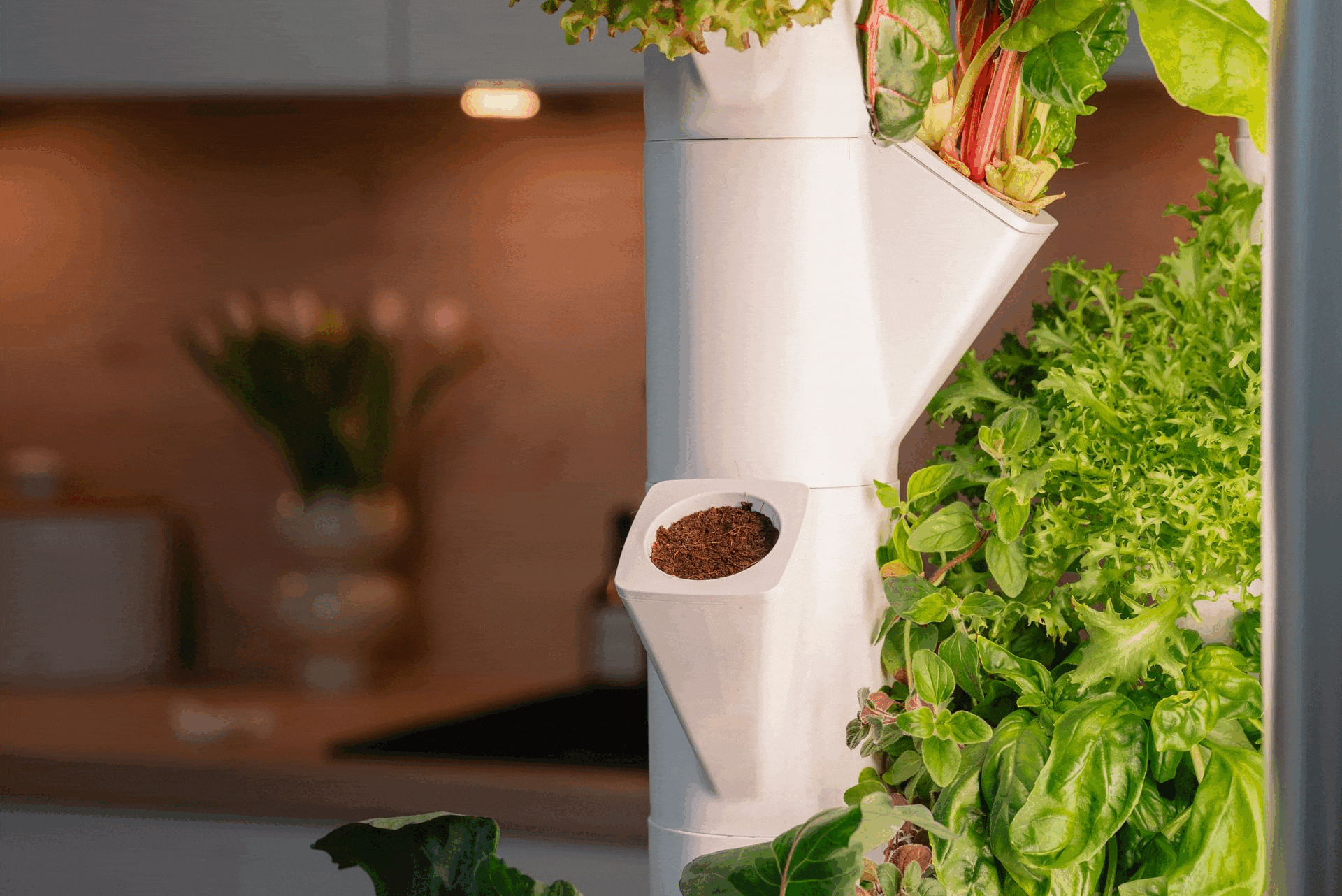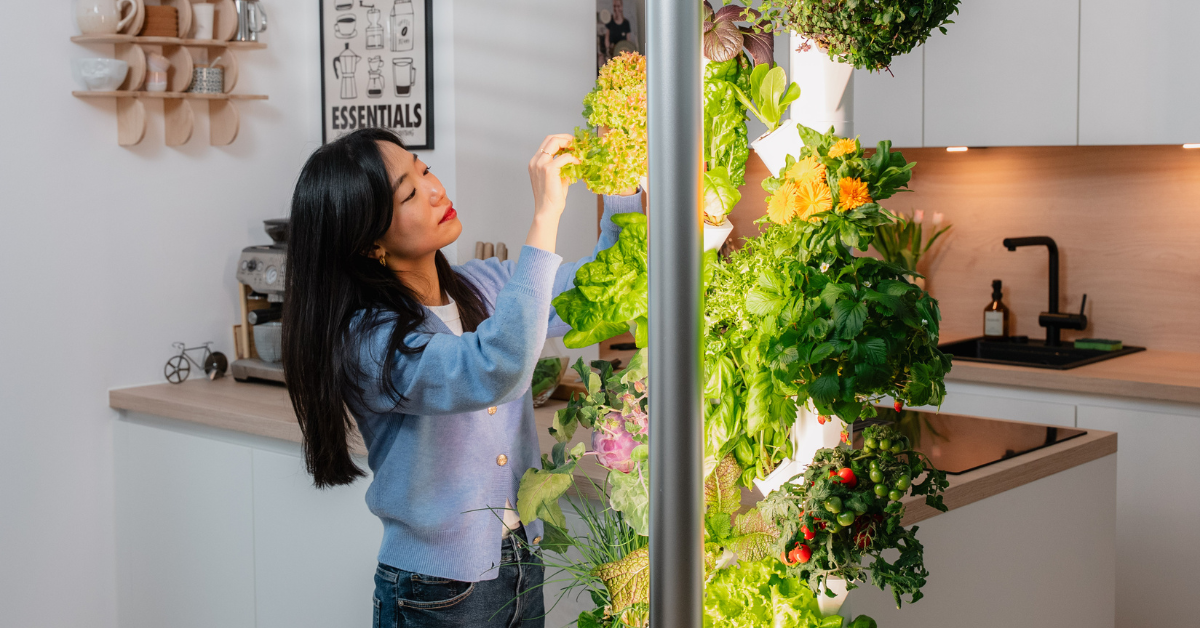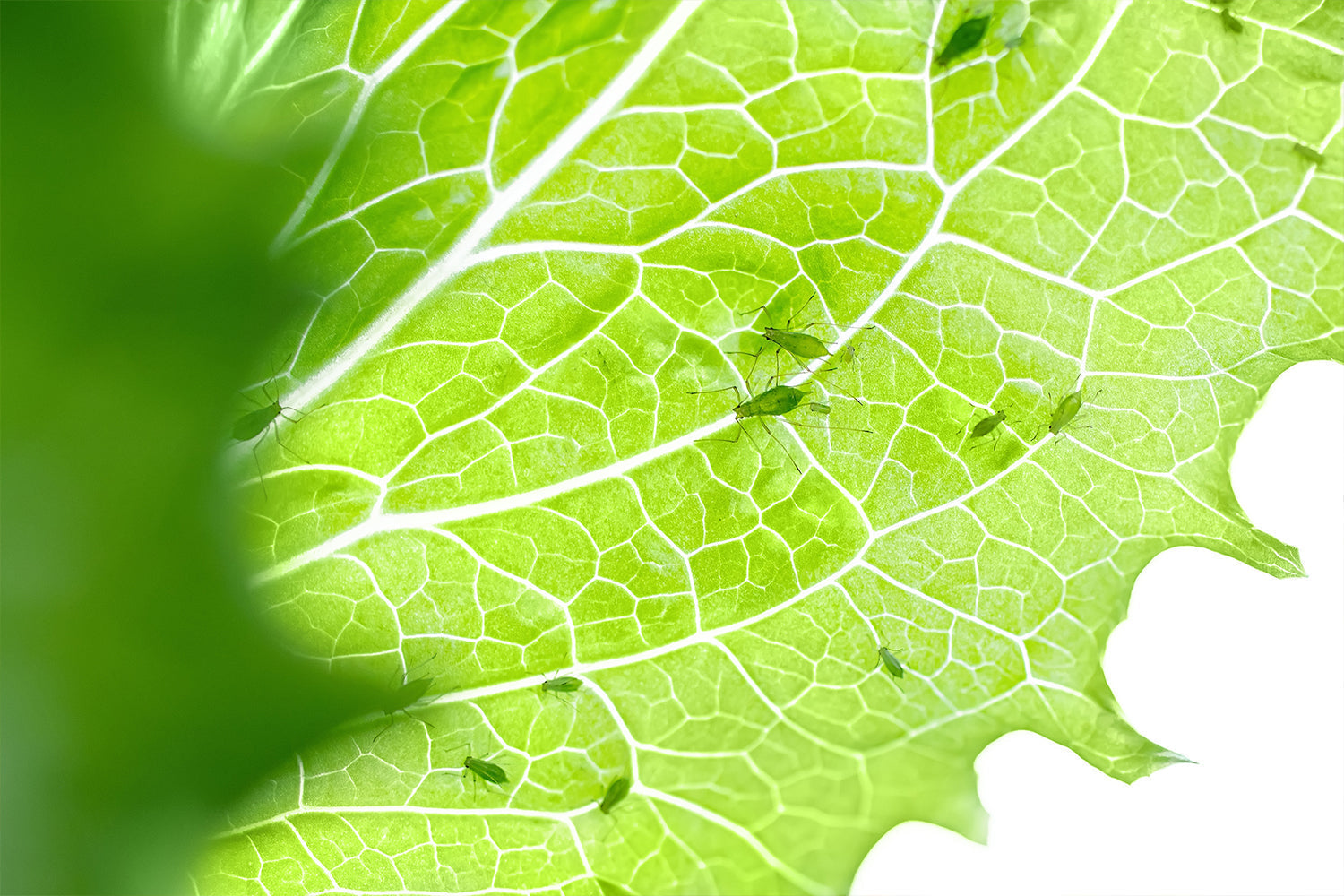Day 1: Starting the Everleaf Garden
Here is a step-by-step guide for a successful start of 24 new plant pods in your Everleaf Garden.
If you only want to restart individual plant capsules while other plants are still growing in the Everleaf Garden, you should take a look here: Starting new plants in the running garden
Once you have successfully set up your Everleaf Garden and placed it in a suitable location , you can finally get started!
Place plant pods:

Place the 24 plant pods from your starter set into the designated plant pots according to the enclosed planting plan.
Some plants need more light than others, so it's important to place them exactly as indicated in the plan.
Do you want to use plants other than those in the starter set?
Then you can find the recommended placement for each plant here: Overview.
You can easily enter your own placement in the enclosed planting plan notepad.
Then carefully remove the label stickers from the pods.
Make sure that no seeds are pulled out or fall out.
Fill with water:

Fill the water tank with approximately 10 liters of tap water.
Activate light and pump:

Press any button to open the menu. Set the current time under "Clock" – this will ensure the lighting starts at the correct time.
The light is preset to 16 hours of illumination from 5 a.m. to 9 p.m. If you want to change this time period, you can find the setting under "Light."
Now go to the "Pump" menu item and set the mode to "Sprout." The pump will start immediately and ensure particularly gentle watering during the germination phase.
You can find more information about how to use the control here: Click here
After 10 minutes, all plant pods should be moist. If not, rotate the still-dry plant pots 90° and restart the pump by first setting it to "Off" and then back to "Sprout."
After just a few days you should see the first seedlings.
Don't be surprised: During the germination phase, the pump only runs briefly every two days—this is completely normal. For optimal germination, the seeds should never get too wet.
Download the Everleaf Calendar:
Our Everleaf calendar helps you keep track of your tasks so you don't have to worry about your plants.
You can download the Everleaf calendar to your mobile phone here: Click here
Day 14: Add fertilizer and adjust pump
Have more than 6 plants not yet germinated?
Then it's best to wait a few days before taking the next steps - otherwise fertilizer and regular watering could impair the germination of the remaining plants.
Don't worry: It's normal for some varieties to take a little longer to germinate than others.
For non-germinated plants:


- Remove plants that have not yet germinated and place the plant pots in a container or tray in front of the light bar. Only transfer them to the Everleaf Garden once the first leaves are clearly visible.
- Don't forget: Cover the empty plant openings in the Everleaf Garden with neoprene lids, otherwise algae will form!
- Make sure the substrate is neither too wet nor too dry. Only add water when the pod begins to dry out and the color starts turning light again.
As a rule, it is sufficient to add some water every 2-3 days – depending on the humidity and ambient temperature.
For already germinated plants:
- Detach the cover plate from the water reservoir and place the Everleaf Garden on a towel. The power supply can remain connected; if you do, please set the pump to "OFF" to prevent it from accidentally starting.
- Empty the remaining water in the container and clean the container with detergent.
- Place the cover plate back on the container and fill it with new tap water until it reaches the "Max" line (20 liters).

- Add the initial dose of plant food (Plagron Hydro A+B) of 40 ml each to the container (first Hydro A, then Hydro B separately). Use the dosing cup to do this. Shake the fertilizer well before use.
- Stir the water thoroughly (by hand if you like), making sure that nothing spills over. Then check the pH value of your water with the
 enclosed pH test kit . Using the tube we provide, take a sample of the water up to half and
enclosed pH test kit . Using the tube we provide, take a sample of the water up to half and
Mix it with two drops of the pH measuring solution. Then compare the color with the color scale on the measuring solution bottle. The pH value should be between 5 and 6.5 so that the plants can optimally absorb the nutrients. If the pH value is too high, use the pH Minus Solution according to the instructions on the bottle. Use the pipette to do this. Stir the water thoroughly before each measurement.
If the pH value is too high, use the pH Minus Solution according to the instructions on the bottle. Use the pipette to do this. Stir the water thoroughly before each measurement.
Note: As the plants absorb nutrients (which have a slight pH-lowering effect) over the course of the week, the pH will gradually rise.
Therefore, we recommend setting it slightly lower initially—in the range of 5.0 to 5.5 (light orange). This way, it will remain within the ideal range even after a few days.
- Finally, set the pump to "Growth" in the controller menu to activate hourly watering.
Day 14-30: Thinning plants

Once your plants develop their first main leaves, it's time to thin.
Some varieties need more space later on to develop healthily and vigorously.
It is best to keep the seedlings that are already well developed and have remained nice and compact.
For leafy vegetables and fruit vegetables, you usually leave one strong sprout per pod.
With herbs, there can be three or more seedlings – depending on the variety.
You can find out how many seedlings are ideal per plant in our guide: Read here
Carefully remove the remaining seedlings with clean scissors by cutting them just above the substrate.
But don't throw them away! These young leafy greens and herbs are packed with nutrients—perfect as a vitamin-rich topping for your next dish.
Day 21: Start weekly care routine
To ensure that your plants remain vital and do not suffer from water or nutrient deficiencies, it is advisable to consistently carry out the weekly care routine .
Day 30: Start root pruning

It’s best to align root care with your regular maintenance routine:
For arugula, celery, mustard greens, sunflower, snack cucumber, and tomatoes, we recommend checking the roots every two weeks. For all other plants, a monthly check as part of your monthly care routine is sufficient.
If the roots are longer than about 10 cm, trim them with clean scissors by roughly one third to prevent them from clogging the irrigation system. Never cut more than one third, as this can interfere with the plant’s growth.
To ensure the plant fits properly back into its slot, try to keep the root system slim and remove any roots growing sideways completely.
Day 45: First monthly care routine
A monthly maintenance routine will keep your indoor garden clean and your plants healthy for the long term. Don't forget to prune the roots as directed to prevent them from clogging your Everleaf Garden. You can use the leftover water to water other houseplants.
Further care and the first harvest
To ensure your plants continue to thrive, it's important to understand each plant's specific care requirements. Pollination plays a particularly crucial role for plants like tomatoes and peppers. Learn how to best support this process and what other care tips are relevant for your plants: Click here
Successful restart for a continuous harvest
After a successful harvest, it's time to make room for new plants ! To ensure you always have a supply of fresh vegetables, it's advisable to stock up on supplies in good time. Learn how to best start new plants here: Read more



